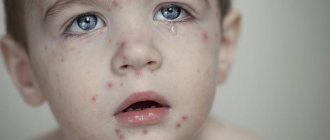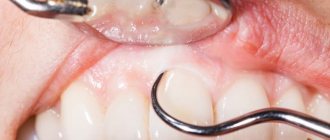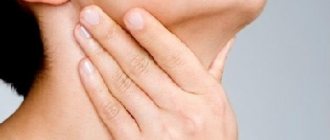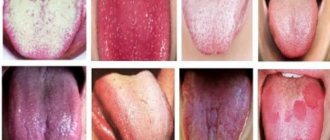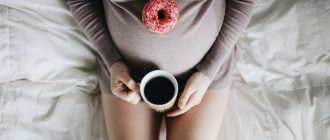Pediatrician
Sayfulina
Maryam Zakareevna
31 years of experience
Pediatrician of the highest category, member of the Union of Pediatricians of Russia
Make an appointment
Miliaria in children under one year of age and older is a fairly common skin lesion, which is a rash caused by severe sweating or poor care of the child’s delicate skin. It is important to understand that the baby’s thermoregulation processes are not yet perfectly established, and therefore the slightest negative factors can cause an undesirable reaction - parents should not be scared and think that this is a rare phenomenon. Almost all kids go through this.
However, you shouldn’t treat this problem negligently either: ordinary heat rash without treatment tends to become more complicated and worse, and in this case, longer and more complex treatment will be required - it’s better not to let it get to that point.
Symptoms
Symptoms of prickly heat in children include:
- The appearance of a characteristic rash on the neck, in the ear area, on the back of the head, along the hairline, armpits, in the upper chest, as well as on the back, in the groin folds and on the buttocks.
- Small rashes in the form of bubbles with transparent contents. In more complex cases, these are reddish nodules with an inflamed rim. The rash reacts to temperature, so it can decrease or increase depending on the environment.
- Weeping lesions - they occur when there is extensive damage to the skin.
- Pustules, swelling, redness of the skin and a putrid odor. This is not so much a symptom of prickly heat in children, but a signal that a bacterial or fungal infection has joined it.
- Soreness, itching and other unpleasant sensations that cause anxiety in the child make him capricious. This is not observed with ordinary heat rash, but if the condition is complicated, such negative factors will progress, simultaneously causing an increase in body temperature.
At any stage of heat rash in a child, even if it is very mild, it is necessary to consult a pediatrician. If complications arise, you should immediately consult a doctor - such issues are dealt with either by a pediatrician or a pediatric dermatologist.
How to distinguish heat rash in a child from allergies and other diseases
When a rash appears on the skin, the most difficult thing for parents is to distinguish prickly heat from other diseases: allergies, chicken pox, measles, etc.
First, you should examine the location of the rash. In the first case, the rashes are located in hard-to-reach places: in the area under the diaper, in the folds of the skin, in the hairline. In this case, the rash almost never appears on open areas of the skin that are well ventilated. But if the rash appears on the face, open parts of the arms and legs, most likely it is an allergy.
A simple home test will also help make a differential diagnosis. You just need to undress the baby and leave him without clothes or a diaper for several hours. If the rash appears as a result of prickly heat, during this time it will decrease and become paler. If it is an allergy, no changes will occur to it.
Additional symptoms will help distinguish the disease from measles, chickenpox and other viral pathologies. With infectious diseases, the temperature always rises, intoxication appears, and the rash quickly spreads throughout the body. In turn, the main symptom of prickly heat is just a rash.
Causes
The main cause of heat rash in a child is overheating, and it is caused by various factors, including:
- Too warm, and synthetic clothes at that.
- Untimely changing of diapers, especially in hot weather or in a warm room.
- A minimal amount of air baths and infrequent bathing, due to which the skin is not cleansed and does not breathe.
- Using cosmetics that are too oily and thick on the skin, which does not allow heat to be released properly.
- Diseases associated with fever. Especially if parents also use warming treatment methods.
To overheating we will add such factors as allergies to various materials, friction and pressure of clothing, effect on irritated areas of feces and urine.
It may seem that the causes of heat rash in children are due solely to parental care errors, but this is absolutely not the case. There are children who themselves are prone to developing this condition. These are allergy sufferers, overweight children, children with various endocrine diseases (for example, diabetes). Also at risk are formula-fed children and premature newborns. When caring for such babies, you should be especially attentive to the condition of the skin and body.
Prevention
Effective prevention consists of proper and thorough hygienic care of the child: regular bathing, frequent changing of diapers or diapers. During the hot season, you can bathe your baby up to 2-4 times a day, but it is important not to use soap, oils, lotions and other products with each water procedure that can disrupt the acid balance and clog the glands.
It is also important to select clothes from natural, breathable fabrics and avoid synthetic and semi-synthetic fabrics that do not ensure normal evaporation of sweat. You need to dress your baby appropriately for the weather and not wrap him up in a warm blanket on a summer night. Source: Skin care for infants. Prevention of diaper dermatitis. Starostina L.S. Medical Council, 2021. p. 41-49.
Sources:
- Skin care for infants. Prevention of diaper dermatitis. Starostina L.S. Medical Council, 2021. p. 41-49
- Newborn skin care. Solntseva O.A. Medical Council, 2014. p. 35-39
- Modern dermatological and cosmetic products for the care of children's skin. Kotlukov V.K., Kuzmenko L.G., Antipova N.V. Medical Council, 2013. p. 8-12
Date of publication: 10/20/2017
The information in this article is provided for reference purposes and does not replace advice from a qualified professional. Don't self-medicate! At the first signs of illness, you should consult a doctor.
Diagnostics
A pediatric dermatologist or pediatrician will examine the child and interview the parents, as well as a series of studies to rule out dermatitis, chickenpox, scarlet fever and many other diseases with similar symptoms. Most often, a visual examination is enough, but tests (scraping) may be required to help identify the causative agent of a secondary infection (if one is observed). A general and biochemical blood test is often done, as well as an analysis of the contents of the vesicles - it all depends on the recommendations of the attending physician.
Prickly heat on the head of an adult
Miliaria in adults is a fairly rare occurrence. It manifests itself in the form of red, swollen blisters, most often in places where clothing comes into contact with the skin and occurs due to the presence of hair. This creates a greenhouse effect.
Causes of prickly heat on the head in an adult
- increased sweating, which may be a manifestation of hyperhidrosis. This disease occurs when the apocrine glands malfunction. Such people suffer chronically from prickly heat;
- diseases of the endocrine system, such as diabetes, hyper- and hypothyroidism;
- obesity;
- diseases of the cardiovascular system;
- high body temperature;
- patients who are forced to spend all their time lying down;
- intense physical work;
- hot weather and dry climate;
- high indoor humidity;
- insufficient scalp hygiene.
Types of prickly heat in adults
- Crystalline - in the form of red small bubbles, located separately from each other or merging together. The most harmless type of prickly heat. It may go away on its own if the provoking factor is eliminated. Occurs more often on the neck, forehead, face;
- Red – in addition to red blisters, inflammation appears. This type is most often localized in the armpits, abdomen, and groin. Does not go away on its own;
- Papular is the next stage after prickly heat. Characterized by the formation of vesiculo-papules. Swelling, pain and redness are observed in the area of the affected skin. The temperature may rise slightly;
- Apocrine – occurs with hyperhidrosis due to impaired functioning of the apocrine glands. It is characterized by the presence of infiltrate due to the fact that the bubbles burst deep in the skin. May be complicated by infection.
Treatment
Usually, treatment of prickly heat in a child is carried out comprehensively and includes the following points:
- Maintaining optimal temperature in the house - no more than 20-22 degrees Celsius. The same goes for humidity, which needs to be monitored - 50-70%.
- The right choice of clothes. It must be appropriate for the temperature and not be synthetic or too dense.
- Regular hygiene procedures - washing, bathing using gentle cosmetics designed specifically for children's delicate skin.
- Regular diaper changes. Your baby's skin should always be clean and dry.
- Use of medications and other means prescribed by a doctor. Sometimes decoctions of medicinal herbs are allowed, but only when the doctor allows it. For the rest, specially selected ointments, powders and other medications are used. In difficult cases, antifungal drugs and antibiotic-based ointments can be used - but parents should not purchase such products on their own.
As a rule, when prickly heat appears in a child, the prognosis is good. After establishing hygiene procedures, the problem disappears quite quickly. If the baby’s immunity is severely weakened, and a dangerous infection develops against the background of prickly heat, there is a risk of complications. In this case, the treatment will be longer and more complex, and in exceptional cases it will require hospitalization of the child.
If your baby exhibits symptoms of infant heat rash, do not wait until complications begin - be sure to contact pediatricians or dermatologists at Meditsina JSC - get examined by a doctor, get an accurate diagnosis and an effective treatment plan.
What you should never do if you have heat rash in a child
Before visiting specialists, many parents try to help their child on their own and use various tips from the Internet. This should not be done under any circumstances. We have compiled a short list of what is prohibited:
- Squeeze and open the blisters on the baby’s skin.
- Cover inflammations and blisters with iodine or brilliant green, as well as other aggressive agents.
- Moisturize the skin with any available means. Heavy moisturizing creams are often used, which in this case are strictly contraindicated.
- Dry wet areas with rough materials or sudden movements. If it is necessary to remove moisture, this is done with very clean, soft and highly absorbent material - with extremely careful and smooth movements.
But it is best to immediately visit a doctor and get detailed advice about what you can and cannot do.
Why does the disease occur?
The essence of the problem is local overheating of the skin, as a result of which excess secretion from the sweat glands provokes an inflammatory process. This is possible in the following situations:
- excessively warm clothing for the child;
- tight wrapping;
- violation of child skin hygiene;
- high ambient temperature;
- lack of ventilation in the room.
As a result, stagnation of secretion is formed in the sweat glands, which creates the preconditions for infection. The surrounding skin becomes sharply irritated and a typical rash appears.
What is prickly heat
In general, everything is clear from the name. Miliaria manifests itself as a rash on the body when a person sweats frequently and profusely. Irritation occurs as a result of “clogging” of the sweat gland ducts.
Heat rash most often occurs in babies under one year of age. There are several reasons for this. The fact is that the skin of a newborn is more delicate, which means it reacts faster and sometimes more acutely to negative external factors, such as a tight diaper. In addition, the processes of thermoregulation in infants under one year of age are not yet properly adjusted - they easily overheat and become hypothermic.
Miliaria is not considered a serious skin condition. If you follow the rules of hygiene and symptomatic treatment prescribed by your doctor, the rash goes away quite quickly.
Until the baby is one year old, the heat rash may periodically make itself felt. But then “relapses” occur less and less often.
How to prevent heat rash in newborns
- Your baby will not develop heat rash even in the hot summer if you always dress your child according to the weather and monitor the temperature in the children's room;
- choose clothes for your baby not based on “beautiful”, but on the quality of “breathable” materials;
- dress your child in loose clothing;
- change your baby’s diapers regularly and often leave him naked to “ventilate”;
- bathe your baby daily;
- do not swaddle your baby too tightly;
- use powders and baby creams exclusively on a water basis;
wash children's clothes with special hypoallergenic products.
Hygiene and skin care in children of the first year of life in questions and answers
Shaposhnikov Alexey Evgenievich
Dermatologist
April 24, 2021
1. What happens to a baby’s skin after birth?
The first days after birth, children do not look like the pink babies from magazine illustrations. The skin may not look very beautiful for a long time, do not worry, in most cases, changes in the skin are not diseases, they are considered physiological, that is, they do not require treatment, and everything goes away as the child grows. What situations may arise:
- Physiological jaundice of newborns (jaundice coloring of the skin on the 2nd - 3rd day of life disappears by the 7th - 10th day of life).
- Dilated skin capillaries disappear by 1–1.5 years of age.
- Physiological skin catarrh is redness of the skin after removal of lubricant. On the 3rd – 5th day, peeling occurs, which lasts from 2 weeks to 1 – 2 months.
- Milia (sebaceous cysts) are whitish-yellowish nodules 1-2 mm in size, rising above the skin level and appearing mainly on the wings of the nose and on the forehead. Occurs in approximately 40% of newborns. These are sebaceous glands with abundant secretion and clogged excretory ducts. If there are signs of mild inflammation (redness), the nodules can be treated with a 0.5% solution of potassium permanganate. Completely disappear by the first year of life.
- Gneiss (milky crust) - white or light yellow scales on the scalp. They are allergic in nature, so when they appear, you should analyze the diet of the nursing mother and consult a pediatrician. To remove, before bathing you can lubricate the crusts with sterilized vegetable oil, and then carefully remove the softened crusts with a cotton swab or a special brush.
2. How to monitor the condition of your child’s skin?
All skin folds are straightened by hand (thumb and forefinger) and inspected to identify residues of powder, oil, or redness of the skin, etc. You need to start with the neck, then the palms, with each finger examined separately, the elbows and armpits, then the legs, interdigital spaces, popliteal and thigh folds. Particular attention should be paid to the genitals, as irritation often occurs there.
3. What products are usually used for care, are there any special features?
These are special children's cosmetics: powder, oil, cream. The cream, as the most oily, is used for severe dry skin, but not in the folds, because may cause diaper rash. If there is no pronounced dryness of the skin, it is enough to use oil; it can also be used to treat folds. If the skin folds are deep, it is better to use powder. The simultaneous use of oil (cream) and powder is not allowed, as the resulting lumps accumulate in the folds of the skin and cause redness and irritation. There is no need to completely cover the child with oil or cream, this inhibits the respiratory function of the skin. It is enough to treat problem areas.
4. What detergents are best to use and how to bathe a child?
Regular baby soap used in soft water can significantly dry out the skin, so it is better to use medicinal cosmetic cleansers. For the first 6 months of life, it is necessary to bathe every day, preferably in the evening, before the last feeding. The water temperature is 37 degrees, in the newborn period the water should be boiled, for older children it should be heated and cold, and they can be bathed every other day. If possible, it is better not to use hot tap water, especially if you have skin problems; it has an irritating effect due to various additives. It is better not to use washcloths, but washing with soap once a week is enough.
5. What herbs are best to use?
The golden rule is not to mix herbs, this way, if a problem occurs, you can always identify the “culprit”. In our region, it is better to use calendula (disinfectant, anti-itch), sage (anti-inflammatory), violet (disinfectant), viburnum bark (disinfectant, anti-inflammatory). Previously widely used string, chamomile, celandine in the soft water of our city aggravate dry skin and it is better not to use them at all.
To prepare a decoction for bathing, boil 100 g of herbs over low heat for 5-10 minutes. and diluted in 10 liters of water. The grass should be in a gauze bag. Bathing lasts about 10 minutes, every other day, for a course of 10-15 procedures.
6. How to properly wash and care for the skin under a diaper?
The diaper should be changed at least every 3-4 hours; at night, if the baby sleeps peacefully, this period can be increased. When breastfeeding, bowel movements can occur quite often, and of course, every time you do this, you need to wash the baby and change the diaper.
At any age, it is necessary to arrange “air baths” when changing clothes, so that the child can be without a diaper for some time, from 15 minutes and the more, the better. This is not only good for the skin, but is also an excellent hardening procedure.
You can wash your baby under the tap, not forgetting that girls are washed from front to back. To cleanse the skin, it is better to use liquid baby cleansers that have a neutral pH and do not dry out the skin. It is better not to use wet wipes all the time, leaving them for situations when the baby needs to be changed outside the home.
You can apply a protective baby cream with zinc under the diaper, which will create a thin, breathable barrier, preventing redness and irritation. Protective baby cream can also have an antibacterial effect.
7. What skin problems most often occur in infants?
If a small pink rash appears on the back or back of the head, it is most likely prickly heat caused by overheating. To prevent heat rash, a child should be dressed according to the season, not wrapped up, and monitor the temperature in the room where the child sleeps.
Diaper rash is manifested by bright redness of the skin of the buttocks and inguinal folds. To prevent diaper rash, it is necessary to properly and regularly cleanse the baby’s skin, thoroughly dry and ventilate the skin and folds during air baths, and apply moisturizers containing drying agents (zinc oxide, talc). In this case, you need to use diapers with caution and for a short time, maximizing the air baths.
Often diaper rash in newborns occurs as a result of fungal infection of the skin and mucous membranes (thrush) . In this case, consultation with a dermatologist and special treatment are necessary.
Pyoderma manifests itself as small superficial pustular rashes. Often found in young children and caused by staphylococci and streptococci, it is an infectious skin disease. If a child develops pustular rashes, it is necessary to consult a dermatologist.
Allergic dermatitis is the general name for redness, spots, peeling and rashes on the skin of an allergic nature. Allergic dermatitis is not a skin disease, it is a manifestation of an allergic reaction when, due to the immaturity of the immune and digestive system, some substances entering the body are not absorbed and provoke irritation. Can be food or contact. If allergic dermatitis appears, you need to consult a pediatrician who will help you choose a diet and advise how to relieve the symptoms.
Prevention includes long-term breastfeeding, proper introduction of complementary foods, and a hypoallergenic lifestyle. If parents are allergic to anything, or they themselves had skin problems in childhood, and currently have dry skin, or have skin diseases, then it is necessary to be more attentive to prevention, because negative tendencies are often inherited.
8. What to do if skin problems do appear and tend to persist?
If changes in the skin become persistent, itching appears, the child becomes restless, be sure to visit a dermatologist, especially in the following cases:
- Affects 20% of the skin surface, or 10%, including the eyelids, hands, and skin folds.
- Severe peeling and redness of the skin.
- Attachment of infectious complications on the skin.
- In diagnostically unclear cases.
General information
Miliaria is a form of dermatitis.
This is a non-infectious skin lesion, which is associated with increased function of the sweat glands when the body overheats and profuse sweating. Miliaria is considered a childhood disease, which is associated with imperfection and instability of skin thermoregulation: heat transfer prevails over heat production, and the sweat glands do not function sufficiently. This makes it difficult to maintain body temperature at a constant level. The anatomical features of children's skin (thin stratum corneum of the epidermis, structural features of sweat glands with narrow excretory ducts) make children very susceptible to the appearance of heat rash , which can develop in the first months. Despite this, prickly heat also occurs in adults and occurs after exposure to heat, physical activity, or wearing clothes that are out of season. Miliaria is considered a physiological condition if it is not accompanied by complications. In adults, it has a slightly different localization (under the mammary glands, in the perineum and between the legs), can cause discomfort in everyday life, and given the possibility of a secondary infection, it requires timely treatment.
Classification
According to the clinical course, it happens:
- Miliaria crystalline (superficial).
- Miliaria rubra.
- White (papular)
- Yellow.
In the crystalline form, superficial blockage of the ducts occurs. Bubbles up to 1 mm with clear liquid appear on the skin, which easily open with the formation of peeling. The rash is localized in adults on the torso, and in children - on the body, face and neck.
Red is the most common type, appearing in hot weather in adults and with increased sweating in children. It is characterized by the appearance of red itchy spots with papules and papulo-vesicles. With this form, the level of blockage of the ducts is deeper. Localized in skin folds and infection is possible. When white, milky white blisters appear, which is associated with infection with coccal flora. With yellow, true blisters with yellow pus appear located inside the epithelium.
Rashes occur at any time of the year, but most often during hot periods, which is associated with increased sweating. With any type of rash, most often appear on closed areas of the skin, which sweat a lot under clothing and are additionally irritated by friction - the elbows on the arms, armpits, inguinal and intergluteal folds. In children and adults, irritation occurs in the mouth when in contact with synthetic “non-breathable” fabrics (bandages, clothing or low-quality diapers). With severe sweating, rashes appear on the face (mainly on the forehead), neck and head, which is accompanied by itching . If hygiene is not observed, complications can occur - vesiculopustulosis and sweat gland abscess .


